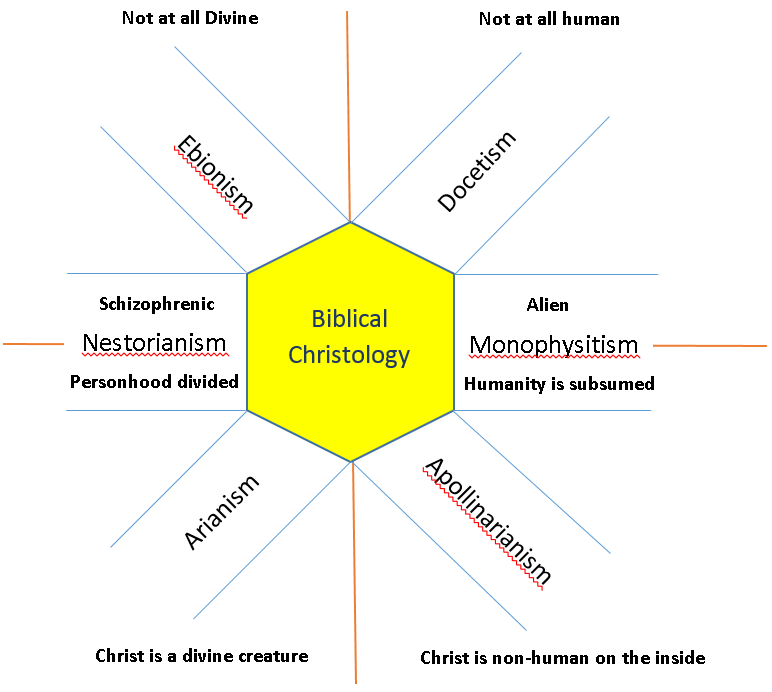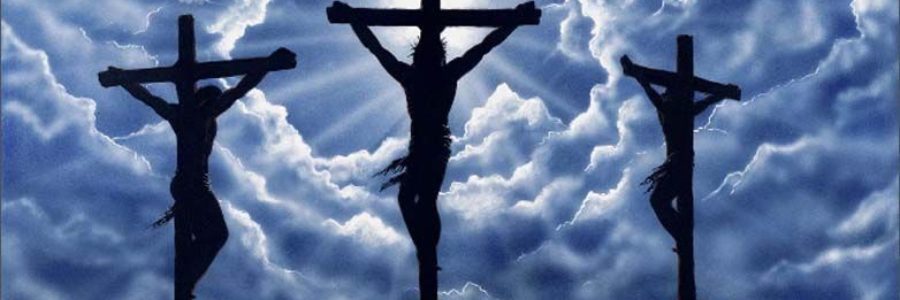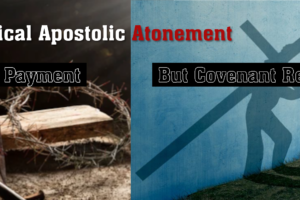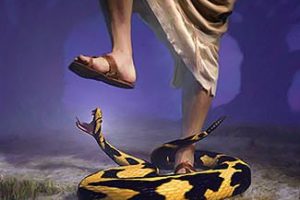The Early Christological Heresies
On the Nature of Christ
 |
This explanatory model we will call the hexagon of heresy. All teaching or doctrine that ventures outside the boundaries of the hexagon represent unbiblical and heretical departures from the scriptural revelation of Christ.
These may be classed in two broad groups and two sub-groups. Divine vis-a vis Human and Partly Divine vis-a-vis Partly Human. The other two errors merge the natures either into a single nature or confound them such that only one nature is active at any given moment; creating either a Superman Messiah (who is Alien and NOT fully human or of this earth) as in the error of Monophysitism or a Messiah who is either schizophrenic or has Dissociative Identity Disorder as in the error of Nestorianism. The earlier heresies of Ebionism denied Christ’s deity while the error of Docetism denied Christ’s humanity. Their later variants were much more insidious. They held that he was partly divine (Arianism) or partly human (Apollinarianism). Essentially these Christological errors either deny Christ’s complete Deity or complete Humanity or subsume or confound them in the one person of Christ. |
Not at all Divine OR not at all HumanEbionism – Denies Christ’s deity in entirety. This was primarily a Jewish heresy. There were Jews who believed in a mere human Messiah and rejected Paul’s apostleship. Docetism – Denies Christ’s humanity in entirety. This is a core teaching of the dualism of gnosticism. Spirit = good ; Matter = bad. According to the primal gnostic myth, the world of men and matter as we know it, was created by a lesser ignorant, blind, and evil god called the demiurge. The true or highest god would NOT debase himself to reveal himself in (evil) matter. Partly Divine (demi-god) OR Partly Human (extra-terrestrial)Arianism – Arius affirmed that “There was a time that the Son was NOT”, that the Son is God with a a little “g”. The son is therefore a creature and had a beginning. Arians would interpret the biblical phrase “the firstborn of every creature” to mean that the son was created and not therefore eternal. Arius in order to preserve the immutability and oneness of God denies Christ’s eternal pre-existence; else in his mind there are two Gods and you have a God who suffered. Yet in so doing he creates change in the father, a quasi-deity in the son , and a soteriology of human effort as Christ achieves this quasi-deity status by his perfect obedience. Christ is a quasi-god by adoption or elevation in status and NOT by nature and there is change in the father as there was a time when He was not a Father. Apollinarianism – Apollinarius held the view that Christ had a human body, but a Divine mind and soul. He did not possess the intangible and internal parts that make one fully and completely human. Gregory of Nazianzus in refuting this view stated that the “Unassumed is the Unhealed”. That is, if Christ did not have a human soul – then the human soul remains unhealed or untouched by the atoning work of Christ. Confusion and Subsuming of the NaturesNestorianism – Nestorius was accused of dividing the Deity and Humanity in Christ to such an extent that the natures are actors and function as two separate persons. Nestorious was accused by Cyril of Alexandria of conflating persons with natures. Natures grant capacities to act; but persons are the actors and agents. Natures do nothing. Monophysitism – Also called Eutychianism. This view held the Deity and Humanity as fused with the humanity generally being subsumed by the Deity; resulting in one confused nature. It appears to be the natural devolution of the Apollinarian heresy.
|
|






2 Comments
Leave your reply.